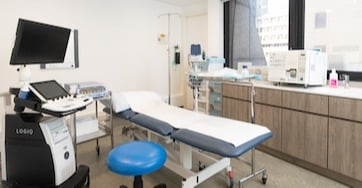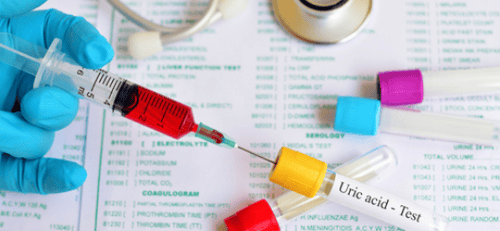Pancreatic cancer (胰臟癌) is one of the most challenging cancers to treat, primarily because it is often diagnosed in advanced stages. When detected early, surgery, particularly a pancreatectomy(胰臟切除術), offers the best chance of controlling the disease. A pancreatectomy is a surgical procedure in which part or all of the pancreas is removed to eliminate cancerous tissue. This blog will guide you through what to expect before, during, and after a pancreatectomy, as well as how the procedure impacts the body and long-term health outcomes, including the role of pancreatic enzymes in recovery and digestion.
Understanding Pancreatectomy
A pancreatectomy (胰臟切除術) is a surgical procedure performed to remove cancerous parts of the pancreas. Depending on the location and extent of the cancer, the surgeon may perform one of several types of pancreatectomy:
Whipple Procedure (Pancreaticoduodenectomy)
- The most common surgery for pancreatic cancer
- Removes the head of the pancreas, part of the small intestine, the bile duct, the gallbladder, and sometimes part of the stomach
Distal Pancreatectomy
- Removes the tail and sometimes part of the body of the pancreas
- Common for cancers located in the tail of the pancreas
Total Pancreatectomy
- Removes the entire pancreas, gallbladder, part of the stomach, the bile duct, and portions of the small intestine
- This is rare but may be necessary in cases where the cancer has spread extensively
Central Pancreatectomy
- Removes the middle part of the pancreas while preserving the head and tail.
- Performed in rare cases to preserve pancreatic function.
Before Surgery: Preparing for a Pancreatectomy
Preparing for a pancreatectomy involves a combination of medical evaluations, lifestyle adjustments, and emotional preparation.
Medical Assessments
- Blood tests: To check overall health and liver function
- Endoscopic procedures: In some cases, an endoscopic ultrasound or biopsy is performed to confirm the diagnosis
Prehabilitation
- Nutritional support: Since pancreatic cancer affects digestion, patients may require a high-calorie and high-protein diet before surgery
- Exercise: Light physical activity can improve strength and cardiovascular status and speed up post-surgery recovery
Psychological Preparation
- Surgery for pancreatic cancer is a major procedure that comes with risks and lifestyle changes. Many patients benefit from counselling or support groups to prepare emotionally for recovery

During Surgery: What Happens in a Pancreatectomy?
Pancreatectomy is a complex procedure performed under general anesthesia. Depending on the type of pancreatectomy, the surgery may take 4-8 hours.
Key Steps During the Procedure (Open Pancreatectomy):
- Incision: The surgeon makes an abdominal incision to access the pancreas
- Removal of Tissue: The cancerous portion of the pancreas and nearby tissues or organs are carefully removed
- Reconstruction: After removing the cancerous tissue, the remaining organs are reconnected to maintain digestive and bile flow
- For example, in the Whipple procedure, the surgeon attaches the stomach, bile duct, and remaining pancreas to the small intestine
- Closing the Incision: The surgical site is closed with sutures or staples
With advancement in technology and surgical technique, pancreatectomy can also be performed via the laparoscopic and robotic approaches, known as minimally invasive surgeries. Both approaches have the advantages of smaller scars, less pain, faster recovery times, less blood loss and shorter hospital stay.
After Surgery: Recovery and Long-Term Changes
Recovery from a pancreatectomy involves a combination of hospital care, home recovery, and lifestyle adjustments. The pancreas plays a vital role in digestion and blood sugar regulation, so patients often experience significant changes after surgery.
- Immediate Post-Surgery Recovery
- Hospital Stay: Most patients stay in the hospital for 1-2 weeks. During this time, doctors monitor for complications such as infections, bleeding, or leaks at the surgical site. Minimally invasive surgeries offer the advantage of shorter hospitalizations
- Pain Management: Pain is managed with medications, and patients are encouraged to move as soon as possible to prevent blood clots. Minimally invasive surgeries have less post-surgery pain
- Dietary Support: Initially, patients are given liquids or soft foods until the digestive system adjusts
- Digestive Changes and Pancreatic Enzymes
Since the pancreas produces enzymes essential for digesting fats, proteins, and carbohydrates, patients often need pancreatic enzyme replacement therapy (PERT) after surgery. These enzymes, such as pancreatin, are taken in pill form to help digest food and absorb nutrients properly.
- What is Pancreatin?
Pancreatin is a mixture of digestive enzymes (amylase, lipase, and protease) that substitute the enzymes normally produced by the pancreas. It is critical for proper digestion, preventing malnutrition, and managing symptoms like diarrhea, bloating, and weight loss.
- How to Take Pancreatic Enzymes
Enzyme supplements are taken with meals or snacks to aid digestion. A healthcare provider will adjust the dosage based on the amount of pancreas removed and the patient’s specific needs and presenting signs and symptoms post-surgery.
- Blood Sugar Monitoring
- Diabetes Risk: The pancreas also produces insulin, which regulates blood sugar levels. After a total pancreatectomy, patients develop diabetes and require insulin therapy. Even after partial removal, blood sugar levels may fluctuate, requiring careful monitoring
- Follow-Up Care
- Regular Check-Ups: After surgery, patients need frequent follow-ups to monitor their recovery and detect any signs of recurrence
- Adjuvant Therapy: Many patients undergo chemotherapy or radiation after surgery to reduce the risk of cancer returning
Pancreatic Cancer Survival Rate After Pancreatectomy
The pancreatic cancer survival rate varies depending on the stage at which the cancer is diagnosed and the success of the treatment.
- Early-Stage Survival
- When pancreatic cancer is detected early and the tumour is confined to the pancreas, surgery offers the best chance for long-term survival
- For localised pancreatic cancer, the 5-year survival rate after surgery is approximately 20-30%
- Advanced-Stage Survival
- For cancers that have spread to nearby tissues or lymph nodes but are still operable, the 5-year survival rate drops to around 10-15%
- If the cancer has metastasised to distant organs, surgery is typically not an option, and the focus shifts to palliative care
- Impact of Pancreatectomy
While a pancreatectomy can significantly improve survival rates in early-stage pancreatic cancer, it is not a guaranteed cure. Recurrence remains a risk, and long-term outcomes depend on factors such as the tumour’s size, location, and whether it has spread.
Challenges and Complications After Pancreatectomy
Although a pancreatectomy can be life-saving, it is a major surgery that comes with potential risks and complications, including:
Digestive Issues
- Without sufficient pancreatic enzymes, patients may experience malabsorption, diarrhea, and weight loss. Pancreatic enzyme supplements like pancreatin help mitigate these issues
Infections
- Surgical site infections or abdominal infections may occur. Prompt medical attention is needed for symptoms like fever, redness, or swelling
Delayed Gastric Emptying
- Some patients experience difficulty emptying their stomachs after surgery, leading to nausea and vomiting
Nutritional Deficiencies
- Fat-soluble vitamins (A, D, E, and K) may not be absorbed properly, requiring supplementation
Diabetes
- Total removal of the pancreas results in insulin-dependent diabetes, requiring lifelong blood sugar management and insulin treatment
Life After Pancreatectomy
Adapting to life after a pancreatectomy requires significant lifestyle changes, but with proper care and support, many patients can return to normal activities.
- Dietary Adjustments
- A balanced diet rich in protein and healthy fats is essential
- Small, frequent meals are often easier to digest
- Patients may need to avoid fatty or greasy foods to prevent digestive discomfort
- Exercise and Rehabilitation
- Light exercise can aid recovery and improve overall strength
- Patients should gradually increase activity levels as recommended by their healthcare team
- Emotional Support
- Psychosocial support, including counselling and support groups, can help patients cope with the physical and emotional challenges of cancer and major surgery
Pancreatectomy FAQ
What is a pancreatectomy?
Pancreatectomy is a surgical procedure where a part or the whole pancreas is removed to treat pancreatic cancer or other pancreatic diseases such as a pseudocyst. The procedure is performed to remove cancerous tissue and can significantly improve survival rates. Depending on the location and extent of the tumour, different types of pancreatectomy pancreatic surgeries may be performed, including the Whipple procedure, distal pancreatectomy, or total pancreatectomy.
What are the types of pancreatectomy surgeries?
The different types of pancreatectomy surgeries are suited for various stages and locations of pancreatic cancer:
Whipple Procedure: This is the most common surgery, where the head of the pancreas is removed along with part of the small intestine, bile duct, gallbladder, and sometimes part of the stomach.
Distal Pancreatectomy: This procedure removes the tail (and sometimes part of the body) of the pancreas. This is typically used when the cancer is located in the tail of the pancreas.
Total Pancreatectomy: The entire pancreas, gallbladder, part of the stomach, bile duct, and parts of the small intestine are removed. This is typically used when the cancer has spread extensively.
Central Pancreatectomy: This is a rare procedure that involves removing the middle part of the pancreas, while preserving the head and tail. This is to maintain some pancreatic function.
The type of surgery depends on the location of the cancer and the patient’s overall health.
What is a total pancreatectomy?
The total pancreatectomy procedure involves the complete removal of the pancreas. This surgery is performed when the cancer has spread throughout the pancreas, or when other treatments are not viable.
In addition to the pancreas, the procedure also often involves the removal of the gallbladder, part of the stomach, the bile duct, and sections of the small intestine. Patients who undergo this surgery will need life-long insulin therapy for blood sugar regulation, as the pancreas produces insulin, which is critical for managing glucose levels in the body.
What is a distal pancreatectomy?
The distal pancreatectomy procedure involves removing the tail of the pancreas. Sometimes, a part of the body of the pancreas is also removed. The procedure may also remove nearby tissues or organs that are affected by cancer. Distal pancreatectomy allows the remaining pancreas to function.
How long does a distal pancreatectomy take?
A distal pancreatectomy typically takes around 4 to 6 hours to complete, depending on the complexity of the surgery and the patient's condition. The surgery is performed under general anaesthesia, and the procedure may involve an open surgery or a minimally invasive approach using laparoscopic techniques, which can reduce recovery time and improve post-surgery outcomes.
A pancreatectomy is a complex but potentially life-saving procedure for pancreatic cancer patients. While surgery can significantly improve the pancreatic cancer survival rate especially with early diagnosis, it also comes with challenges, particularly in managing digestion and blood sugar levels. The use of pancreatic enzymes, such as pancreatin, is crucial in ensuring proper digestion and nutrient absorption after surgery.
It’s essential to work closely with a multidisciplinary team of healthcare professionals to understand your options and prepare for life before, during, and after a pancreatectomy. With the right care and support, many patients can achieve an improved quality of life and better long-term outcomes.
References
- Cleveland Clinic. Pancreatectomy. 31 Dec 2024 Retrieved from https://my.clevelandclinic.org/health/treatments/23134-pancreatectomy-surgery-removal-pancreas
- NIH. Pancreatectomy. 31 Dec 2024 Retrieved from https://www.ncbi.nlm.nih.gov/books/NBK564309/
 Central General Practice
Central General Practice
 Repulse Bay
Repulse Bay
 Clearwater Bay
Clearwater Bay
 BodyWorX Clinic
BodyWorX Clinic
 Central Specialist Clinic
Central Specialist Clinic
 MindWorX Clinic
MindWorX Clinic
 Partner Clinics
Partner Clinics
 Family Clinic
Family Clinic
 OT&P Annerley Midwives Clinic
OT&P Annerley Midwives Clinic





